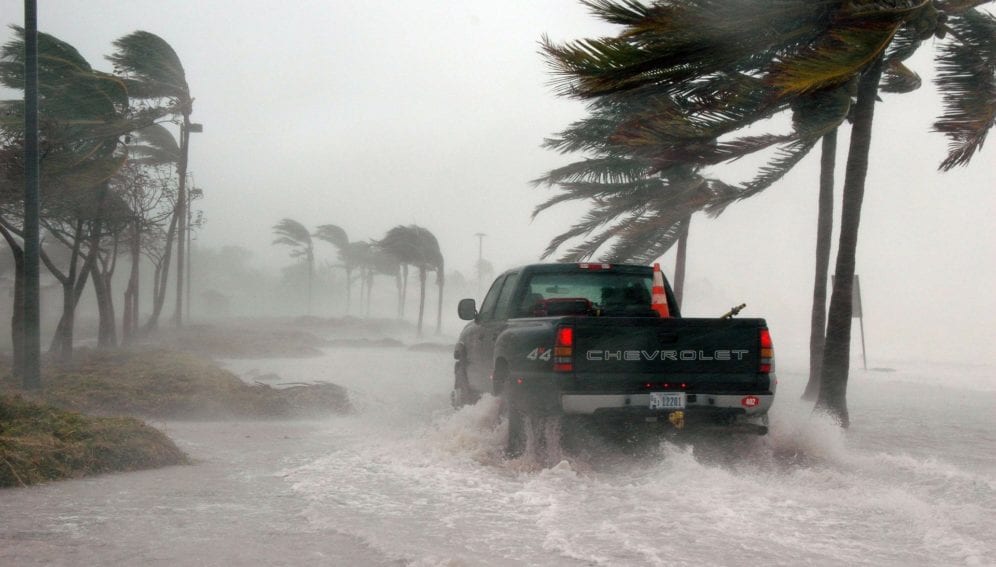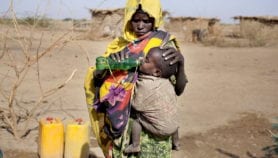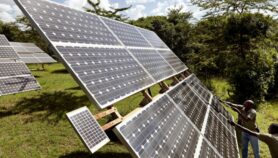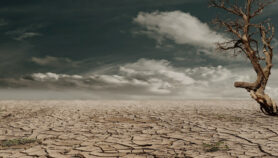08/12/20
Extreme weather events ‘threaten vital infrastructure’

By: Gilbert Nakweya
Send to a friend
The details you provide on this page will not be used to send unsolicited email, and will not be sold to a 3rd party. See privacy policy.
[NAIROBI] Extreme weather events threaten to damage Kenya’s roads, hampering relief efforts, as vector-borne diseases such as malaria intensify, unless action is taken to mitigate their future impact, a study warns.
Drought events will intensify in the country over the next two decades while flooding is also expected to surge over the same period and beyond, the study, published in Atmospheric Research this week (1 December), predicts.
The authors of the study say extreme weather events will have far-reaching consequences for infrastructure, health, agriculture and the energy sector if mitigation plans are not quickly put into action.
“Enhancing tree coverage and other measures that are likely to retain soil will help in reducing such impacts.”
Brian Ayugi, Nanjing University of Information Science and Technology
They say extreme weather events could damage infrastructure such as roads, which will hinder disaster management response programmes. The researchers also predict an increase in vector-borne diseases, such as malaria.
“Severe to extreme” drought events are expected to intensify in the next 20 years, the study found, but as flooding increases, droughts are expected to decrease from 2040.
The study examined the intensity, severity and frequency of drought events across Kenya and forecast an increase in rainfall for the near future (2010–2039), mid-century (2040–2069), and late century (2070–2100), with fewer cases of drought expected towards the end of the century.
“With anticipated heavy rains, cases of increase in surface overflows such as … agricultural fertilisers, pesticides, and animal waste into surface water resources will ultimately affect stream and ecosystem health,” says Brian Ayugi, a co-author of the study and a research fellow at Nanjing University of Information Science and Technology, China.
“Enhancing tree coverage and other measures that are likely to retain soil will help in reducing such impacts.”
The study used projected rainfall data from five selected regional climate models to predict droughts and rainfall in Kenya over the three time periods.
Ayugi calls for plans to create new settlement schemes to house people who may be displaced by floods.
“This is due to the expected surge in the frequency of landslides … especially in the hilly areas, which could eventually affect dam and river banks,” Ayugi explains.
He says researchers should investigate suitable crops to grow in new land areas to enhance food security, as climate change creates a shift in farming systems. ‘New areas’ refers to arid and semi-arid lands in north-eastern Kenya which are projected to experience rainfall in the future and become suitable for farming.
Victor Ongoma, a co-author of the study and a lecturer of physical geography at Fiji’s University of the South Pacific adds that if these projections occur, increases in rainfall and temperature are likely to favour agriculture but temperature increase is likely to reach levels that may be not be good for some crops such as maize and beans.
“It is unfortunate that Kenya continues to witness seasonal droughts and dry spells that are costly. As a way of adapting to these changes, the country needs to put in place more measures that strive to conserve rain water for use during drought, such as use of underground water tanks at household level and use of dams at community level,” Ongoma says.
Ongoma adds that resources and effort should be invested in drought and flood early warning systems in the region.
Herbert Misiani, a researcher at Kenya’s IGAD Climate Prediction and Applications Centre, ICPAC, who was not involved in the study, tells SciDev.Net that although the projections may not be 100 per cent certain, “Kenya should brace for more of these extremes in the coming future and the impacts that accompany them.”
Misiani adds that the level of preparedness will determine whether the impacts of climate change will be severe or bearable.
This article was produced by SciDev.Net Sub-Saharan Africa edition.
References
GuirongTan and others Projections of future meteorological drought events under representative concentration (A Atmospheric Research, 1 December 2020)













